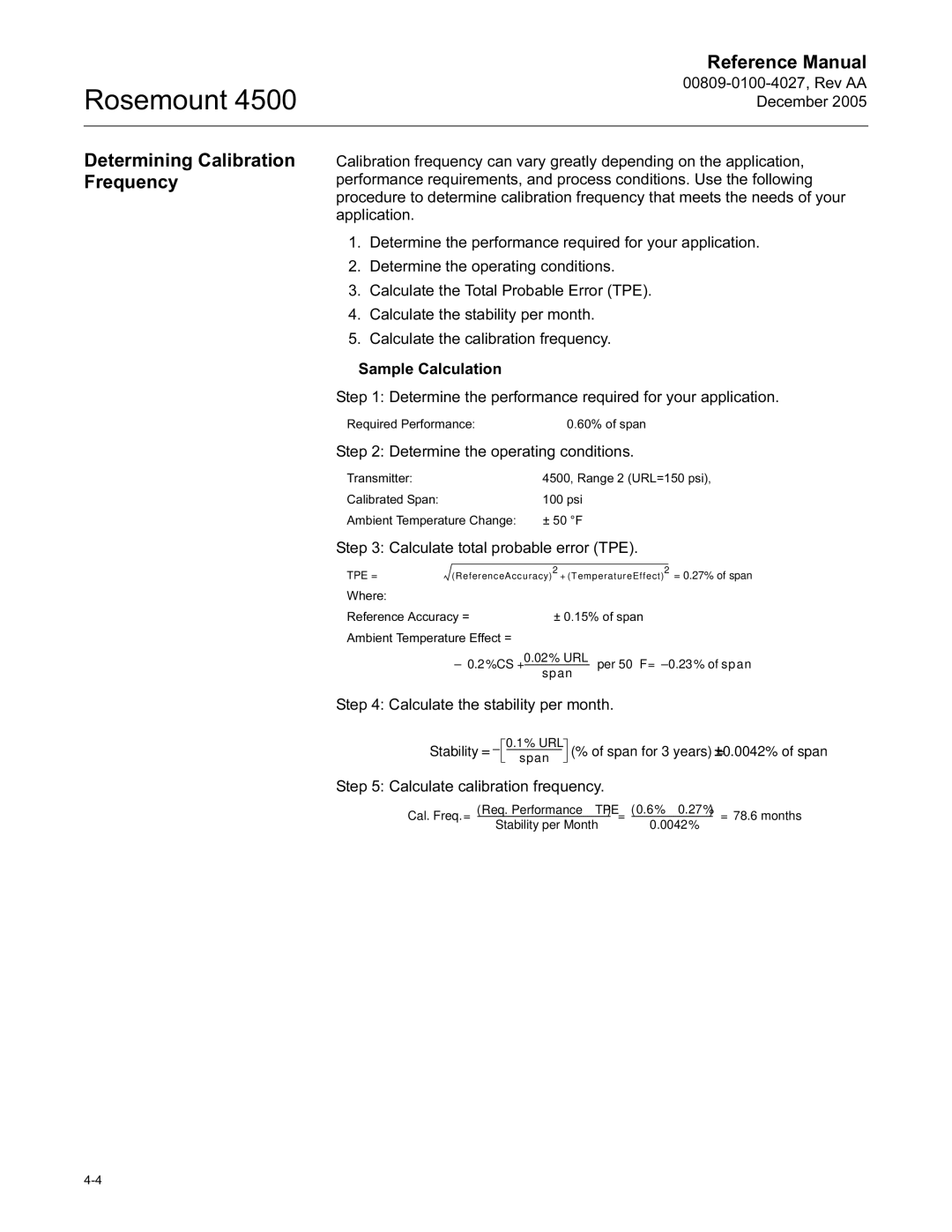
Rosemount 4500
Reference Manual
Determining Calibration Frequency
Calibration frequency can vary greatly depending on the application, performance requirements, and process conditions. Use the following procedure to determine calibration frequency that meets the needs of your application.
1.Determine the performance required for your application.
2.Determine the operating conditions.
3.Calculate the Total Probable Error (TPE).
4.Calculate the stability per month.
5.Calculate the calibration frequency.
Sample Calculation
Step 1: Determine the performance required for your application.
Required Performance:0.60% of span
Step 2: Determine the operating conditions.
Transmitter: | 4500, Range 2 (URL=150 psi), |
Calibrated Span: | 100 psi |
Ambient Temperature Change: | ± 50 °F |
Step 3: Calculate total probable error (TPE).
TPE = | ( ReferenceAccuracy)2 + (TemperatureEffect)2 = 0.27% of span | |||||
Where: |
|
|
|
|
|
|
Reference Accuracy = | ± 0.15% of span |
| ||||
Ambient Temperature Effect = |
|
|
| |||
| ± | ⎛ | 0.2%CS + | 0.02% URL ⎞ | per 50 °F = | ±0.23% of span |
| ⎝ | |||||
|
|
|
|
| ||
Step 4: Calculate the stability per month.
Stability = ± | (% of span for 3 years) = ±0.0042% of span | |
| span |
|
Step 5: Calculate calibration frequency.
Cal. Freq. = | = |
Stability per Month | 0.0042% |
